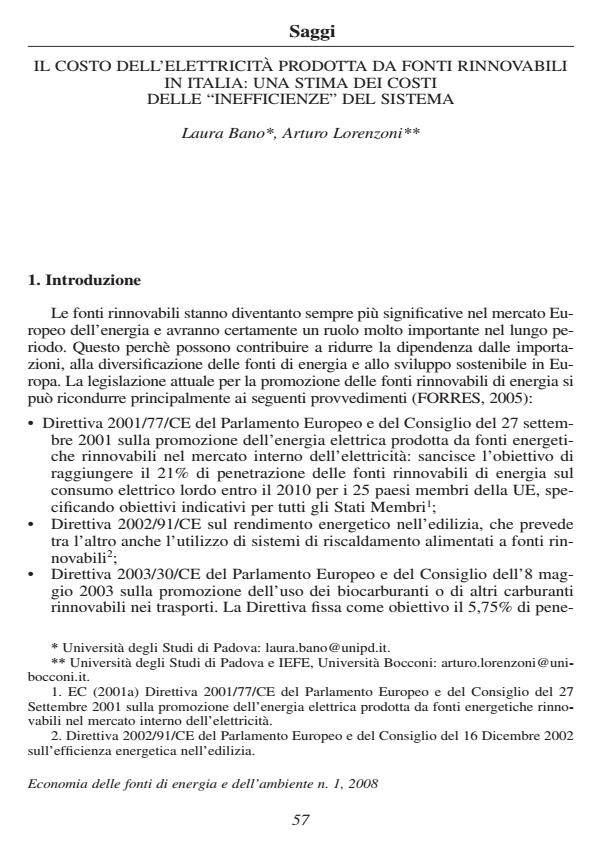Il costo dell'elettricità prodotta da fonti rinnovabili in Italia: una stima dei costi delle "inefficenze" del sistema
Titolo Rivista ECONOMIA DELLE FONTI DI ENERGIA E DELL’AMBIENTE
Autori/Curatori Arturo Lorenzoni, Laura Bano
Anno di pubblicazione 2009 Fascicolo 2008/1 Lingua Italiano
Numero pagine 21 P. 57-77 Dimensione file 772 KB
DOI 10.3280/EFE2008-001004
Il DOI è il codice a barre della proprietà intellettuale: per saperne di più
clicca qui
Qui sotto puoi vedere in anteprima la prima pagina di questo articolo.
Se questo articolo ti interessa, lo puoi acquistare (e scaricare in formato pdf) seguendo le facili indicazioni per acquistare il download credit. Acquista Download Credits per scaricare questo Articolo in formato PDF

FrancoAngeli è membro della Publishers International Linking Association, Inc (PILA)associazione indipendente e non profit per facilitare (attraverso i servizi tecnologici implementati da CrossRef.org) l’accesso degli studiosi ai contenuti digitali nelle pubblicazioni professionali e scientifiche
Electricity generation from renewable energy sources in Italy: The costs of the "System" Inefficiences - The promotion of electricity from renewable energy sources (RES) is a high European Union (EU) priority for several reasons, including the security and diversification of energy supply, environmental protection and social and economic cohesion. The EU Council’s decision of 9 March 2007 points towards increasing renewable penetration to 20% of total primary energy supply by 2020 (binding target). There are both costs and benefits associated with the achievement of such an ambitious target. For renewable technologies, the industrial cost is often higher compared to other energy sources. however, due to learning curve effects and market diffusion, technology related costs are coming down considerably. In some cases, when the external costs are taken into account by the price system, renewables can now be close to competitive with fossil fuels. With particular reference to renewable electricity in Italy, its development is often hampered by burdensome and time consuming authorisation procedures with the consequence of a high "mortality" rate for the investments in the sector, leading to increased costs for the project management. Therefore, in these projects an important cost factor is the high cost of capital due to risk. The analysis of the various renewables’ support mechanisms currently in place in the EU shows that some types of incentive have proven to be more efficient than others in reducing the risk perception of investors and financing institutions, therefore making projects less expensive by reducing the cost of capital (both debt and equity). Therefore the focus here is on the electricity generation costs of some renewable technologies and on the costs related to the "additional" risk perceived by investors/lenders in the sector. The authors estimate the additional cost of capital which investors pay when operating in a risky environment. Some policy indications are finally given to reduce the non-technology related costs for a faster and more efficient growth of the sector. JEL Class. L98, Q28, Q48 Key words: renewable energy, electricity cost, administrative procedures, system inefficiency;
Arturo Lorenzoni, Laura Bano, Il costo dell'elettricità prodotta da fonti rinnovabili in Italia: una stima dei costi delle "inefficenze" del sistema in "ECONOMIA DELLE FONTI DI ENERGIA E DELL’AMBIENTE" 1/2008, pp 57-77, DOI: 10.3280/EFE2008-001004